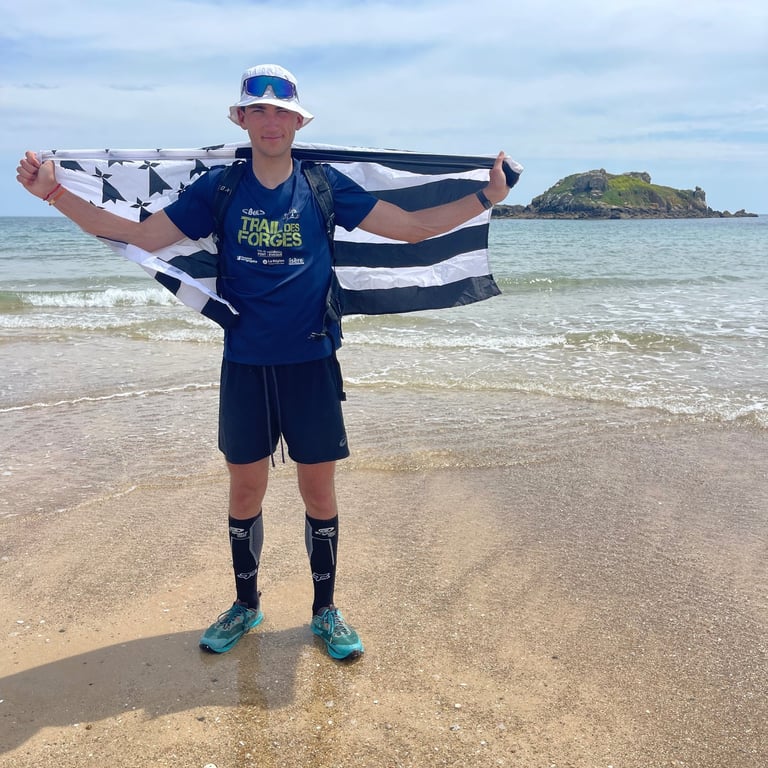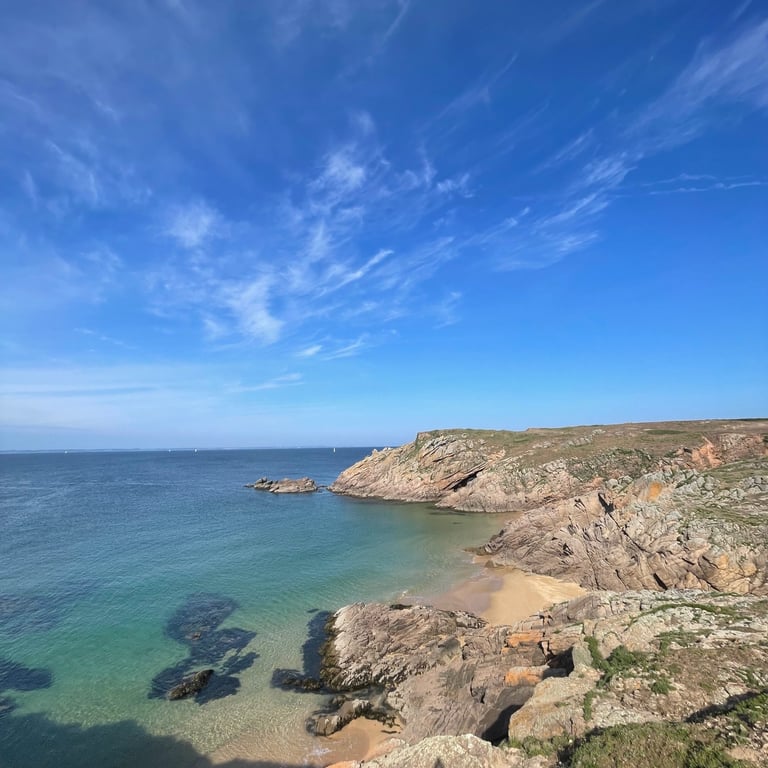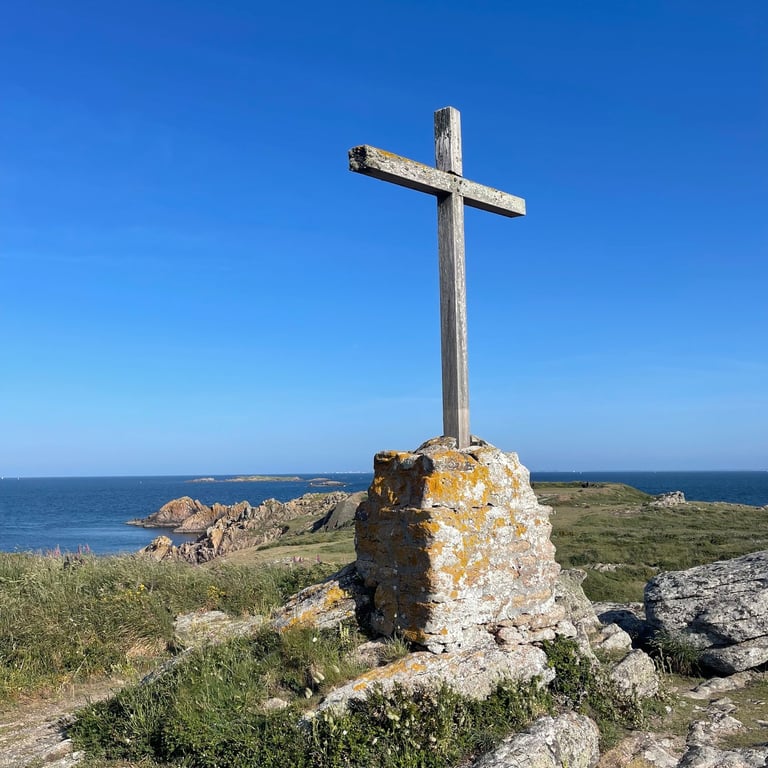Ergerzhadeg Breizh
Ergerzhadeg Breizh (Brittany Expedition in Breton): a trail-running adventure, an island crossing paced by breath and tide.
This year, I put down my bags in Brittany. To truly get to know the region, I chose the only path that felt natural: lacing up my running shoes and setting out to discover its islands on foot. The plan: eleven islands to explore, to feel, to run down to the very last trail. Miles of coastline, granite, wind, and sea spray, all to reconnect with what matters most: running to explore, running to be amazed.
For the past few months, I’d felt like the spark was gone. Running, once a source of energy and joy, had become routine just another habit. I was training hard and the results showed, especially on road races, but I no longer knew why I was running. Even the sea, ever-present, didn’t stir my runner’s heart like it used to. So I decided to set out differently...
No stopwatch. No bib. No competition. Just me, my legs, and the islands. I didn’t want to run against others or even against myself anymore. I wanted to reconnect. With movement, with pure and simple effort, with the raw beauty of this land I’m falling more and more in love with every day.
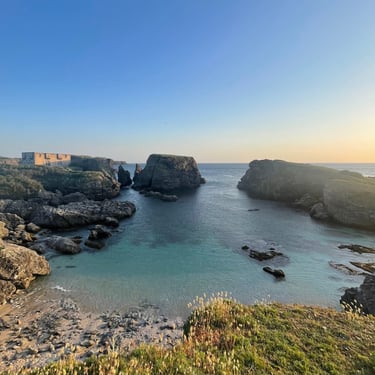
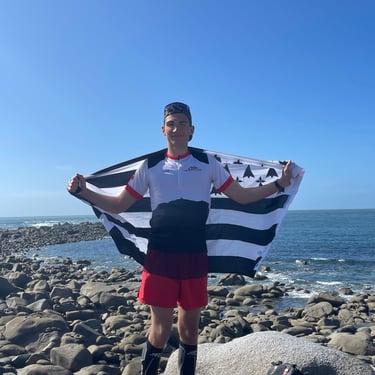
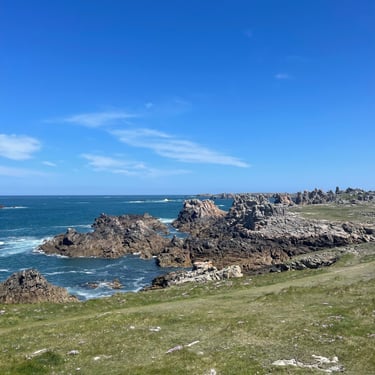
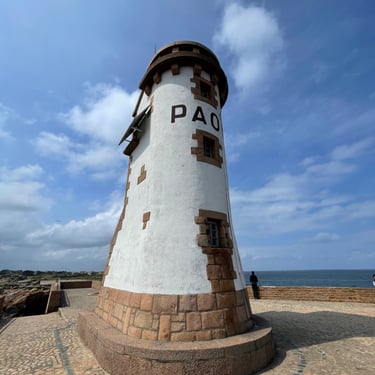
Stage 1: Groix
Six months after my first time getting to know it, here I am again.
This time, the goal is entirely different: no performance pressure, just pleasure. Training still matters, of course but this time, I ran the 27 km pain-free, and with deep joy. And as a little twist of fate, I even improved my time by half an hour go figure...
I decided to go 48 hours beforehand. I hadn’t run much in the past three weeks, choosing other sports instead three weeks of low motivation, where training felt more like a chore than a joy. Then I checked the weather: it looked amazing (which, in Breton terms, means not too much rain during the day). So I booked my ferry ticket, packed my bag, laced up my trail shoes (neglected for six months in favor of road running), and headed for the port of Lorient.
I think I found my spark again.
That feeling of freedom came rushing back: flying down singletracks, weaving through roots, diving into descents headfirst, and most of all, marveling completely alone (perks of a midweek offseason run) at the island’s wild beauty, in its landscapes, its animals, and its plants.
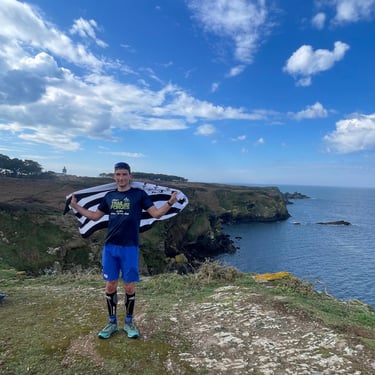
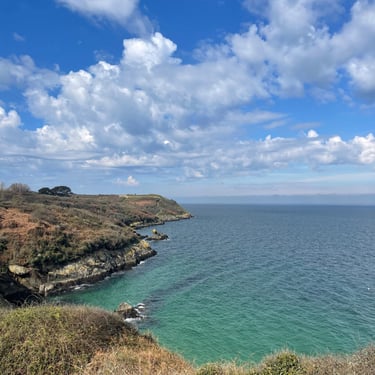
Stage 2: Quiberon
This morning, I opened my eyes and looked straight at the sky. It was sunny, so I ran 50 km to Quiberon and by the time I got there, it wasn’t sunny anymore. Welcome to Brittany! The wind had picked up, sharp and biting, cutting through the cold. No turning back now. So I set off, pushing into the gusts blasting across the peninsula.
The plan: 29 kilometers. No real climbs or steep drops, but a tricky terrain. The sand everywhere swallowed my strides, and the wind, always head-on no matter which way I turned, had fun slowing me down.
Quiberon has a soul of its own. More seaside resort than wilderness, it brings a different rhythm. I traded my trail shoes for road ones better suited to this setting. The route first took me along the western beaches, skimming narrow ledges where a single misstep could have sent me over the edge. Then came Saint-Pierre de Quiberon, with its quiet marina, before finally arriving at Port Maria… and then the rugged, spectacular Côte Sauvage.
In the end, the 29 kilometers went by smoothly a good sign, especially with tougher stages like Ouessant and Belle-Île still ahead.
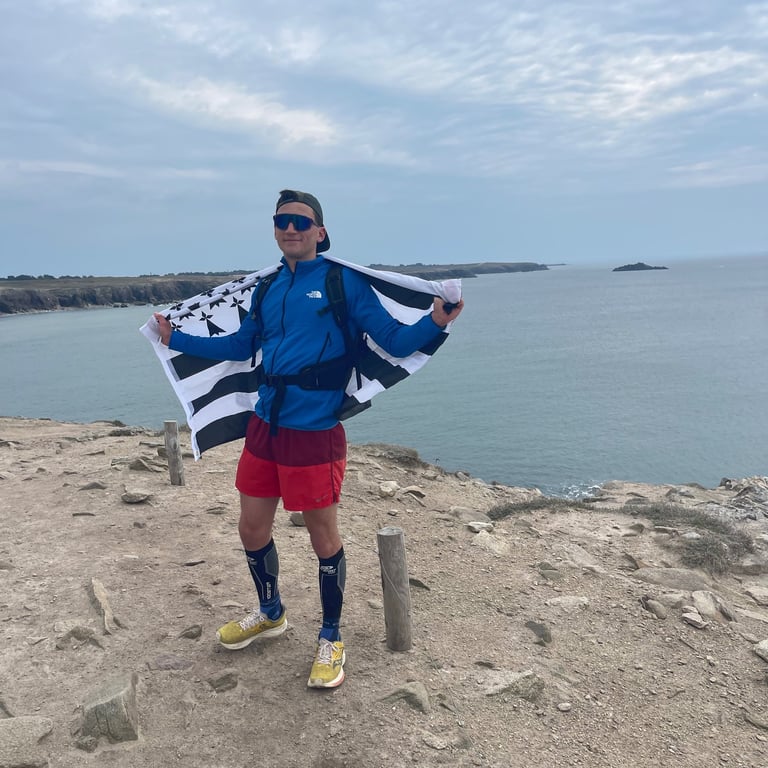
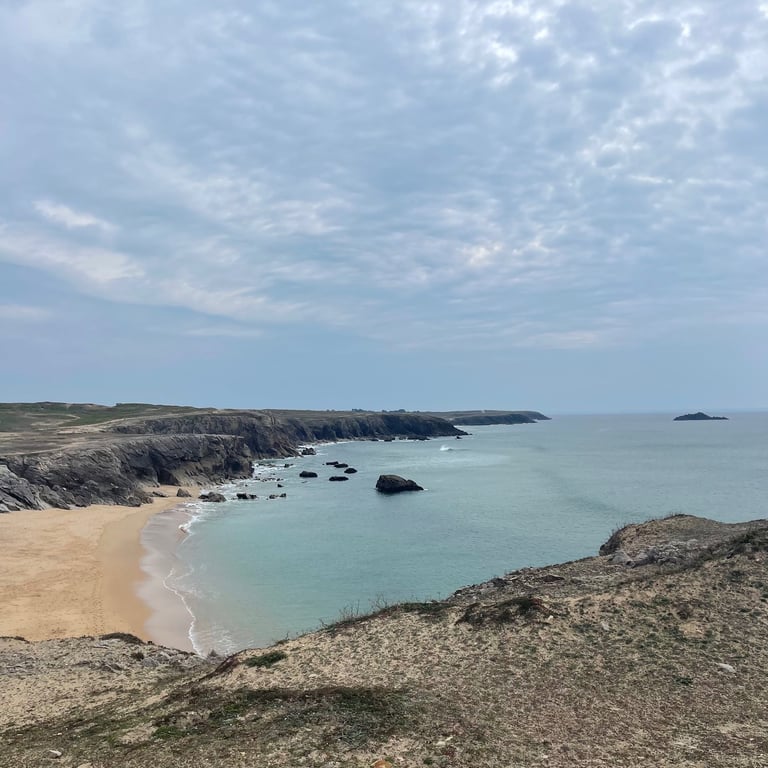
Stage 3: Arz
Beautiful and peaceful. If I had to describe this first stop in my conquest of the Gulf of Morbihan in two words, that would be it.
Two days after wrapping up Quiberon, pushed by perfect weather, I hit the road bound for the island of Arz. A short 30-minute ferry ride, rocked by the golden light of the gulf, and I was stepping onto this little patch of land, ready to circle it.
Arz is sparsely populated. On a winter Tuesday, I was practically alone, pacing the trails to the rhythm of the wind. Today’s stage was shorter than the others, and I let myself be carried by the calm of the place. Until checking the ferry schedule out of curiosity I realized I’d misjudged the time. If I didn’t pick up the pace, I’d be stuck here way longer than planned.
Suddenly, no more daydreaming time to run. I sped up, lengthened my stride, the port in sight, still glancing left and right to soak it all in. A final all-out sprint… and I boarded just in time, one minute before departure.
The miles are stacking up, but my body is holding strong. No pain just that growing sense of freedom, step after step.
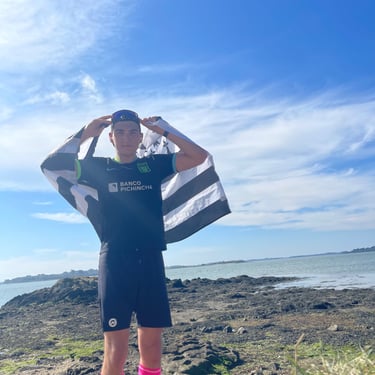
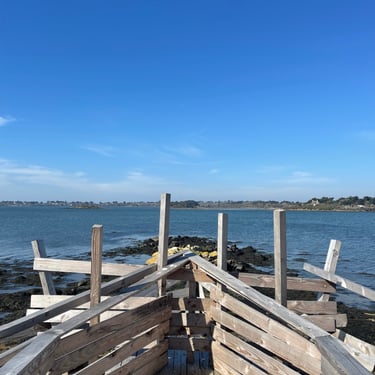
Stage 4: Batz
After two weeks where daily life took over from escape, it was time to breathe again to return to the open air, the kind that sweeps over the islands and carries away heavy thoughts. A stretch of good weather guided me to the island of Batz, the northernmost and humblest stop of my journey.
Small in size, but big in character, it offers a striking contrast so close to the mainland, yet so fiercely preserved. Here, rock reigns supreme, sculpted by wind and tide, while the trails wind between heath and rugged shorelines. I found my trail marks again, familiar paths, and let myself be carried by an easy run just 13 kilometers, with no real challenge simply for the joy of feeling the earth beneath my feet and the wind on my face.
After the run came the exploration. Roaming the island, soaking in its spirit, capturing the moment and once again, marveling at the wild Finistère landscapes that never cease to amaze.

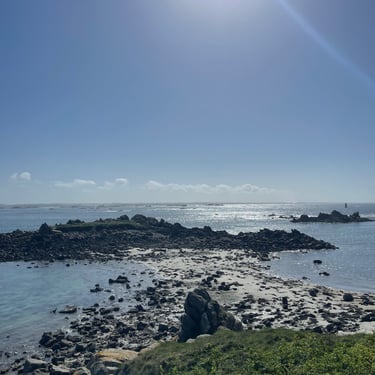
Stage 5: l’Île-aux-Moines
The days passed, and the clouds lingered, pinning me to the ground and holding up my journey once again. Time seemed suspended in this meteorological limbo, and after pacing in circles for too long, I decided to head out despite the looming storm. If I’m going to get wet, I might as well do it on the move. So here I am, back in the Gulf of Morbihan and this time, it’s the Île aux Moines that opens its trails to me.
I thought I’d find a calm island, almost flat, with no real surprises. But just a few kilometers in, I realized it would be anything but. The terrain quickly revealed itself, the trails tightened, the stones slipped beneath my feet, and the moisture made every step more precarious. The first seven kilometers were nearly rugged demanding, unexpected. Then, suddenly, the path opened up, my legs found their rhythm again, and the next twelve kilometers unfolded almost effortlessly like a reward after the early challenge.
It’s not an island of the open sea no towering cliffs, no vast horizon stretching endlessly out of sight. And yet, there’s a kind of soft energy here subtle but real a vibration that belongs only to these places suspended between land and sea.
It wasn’t the hardest stage of the journey, but it had something surprising a blend of contrasts that made me want to stay a little longer. The Île aux Moines surprised me not with grandeur, but with grace.
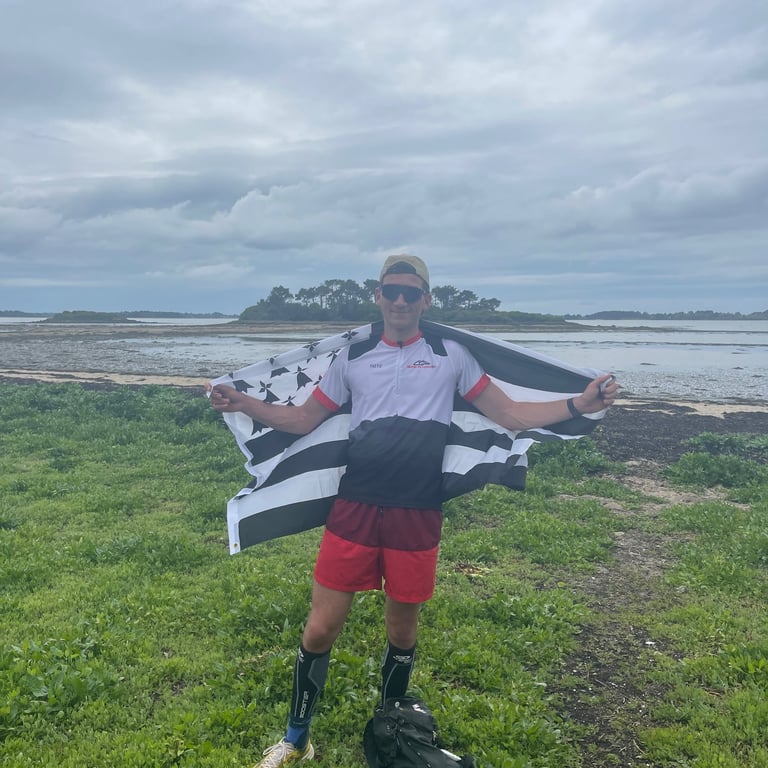
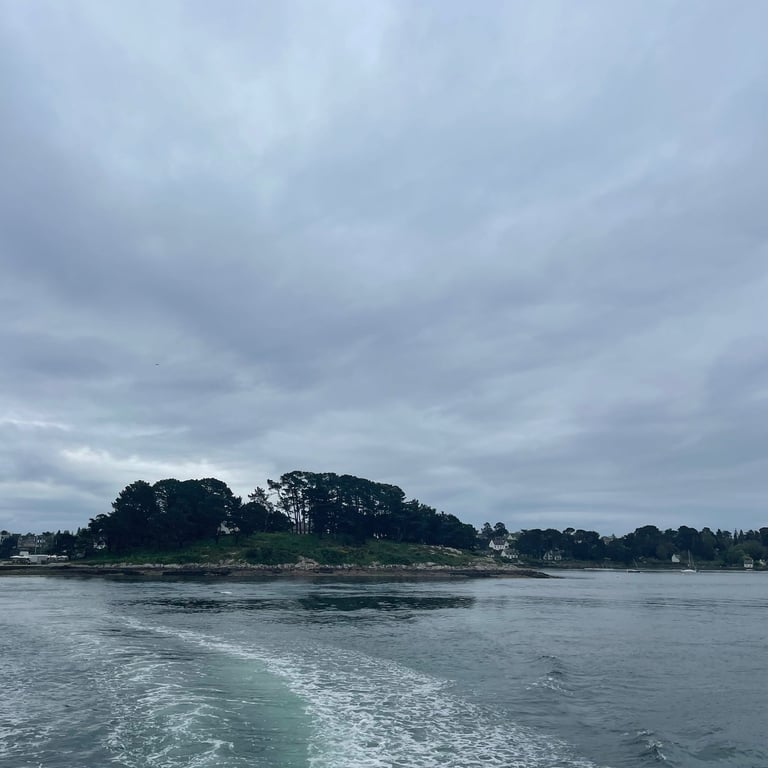
Stage 6: Ouessant
Maybe not the most trail-friendly island, but without a doubt, the most beautiful so far.
What a spectacle this landscape is! A raw, pure, untamed land. Steep cliffs, scattered rocks, free-roaming flocks... all wrapped in an endless, shimmering sea. Ouessant took my breath away. It is, without question, the most majestic island I’ve set foot on since the beginning of this adventure.
The wind was strong and steady, blowing hard, but a generous sun softened its sting. It was between two exams, in this unexpected window, that I set off on a Friday. And the good news: my legs were up for it!
But here, nature rules. Following a GPX track doesn’t mean you’re on a trail. It means pushing forward, even where no real path exists…
Ouessant is wild and thorny. Lined with brambles and gorse those infamous, vicious plants every Breton hiker knows it reminded me that wandering comes at a cost. When you lose your way, sometimes you just have to push straight ahead, in what they’d call a “brutal azimuth” over at Lann-Bihoué. And gorse? It really stings.
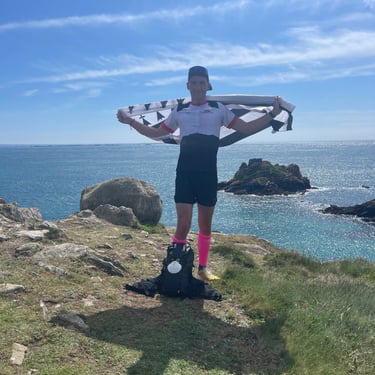

Stage 7: Bréhat
End of exams, end of the academic year… and above all, the beginning of a new crossing. This time, I set my course northward, toward the granite shores of Bréhat Island a Breton jewel off the Armorican coast.
Bréhat isn’t exactly a single island it’s two large rocky masses, joined by a narrow strip of land, shaped by wind and salt. Wild, sublime, raw.
As usual, I strayed from the marked trails to carve my own path. A bad idea? Maybe. Let’s say… ambitious.
Instead of a trail, I found cliffs and the first three kilometers turned into an improvised climbing session on the island’s iconic pink rocks.
After some contorting and scrambling, I eventually rejoined the trails, leading me all the way to the lighthouse, perched at the northern tip of the island.
Up there, the landscape opened wide: a breathtaking panorama over the island’s northern face.
But Bréhat wasn’t done with me yet. I continued on, sometimes following faint tracks, sometimes stepping into nothing, always with the sense that I was getting lost…
In the end, my navigation was shaky but nearly accurate only three bonus kilometers added to the tally
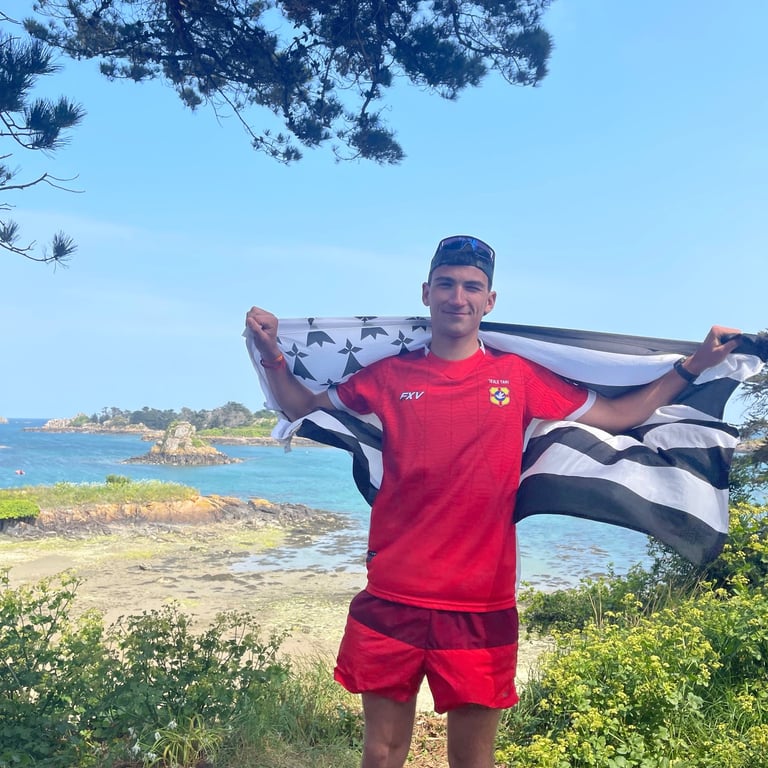
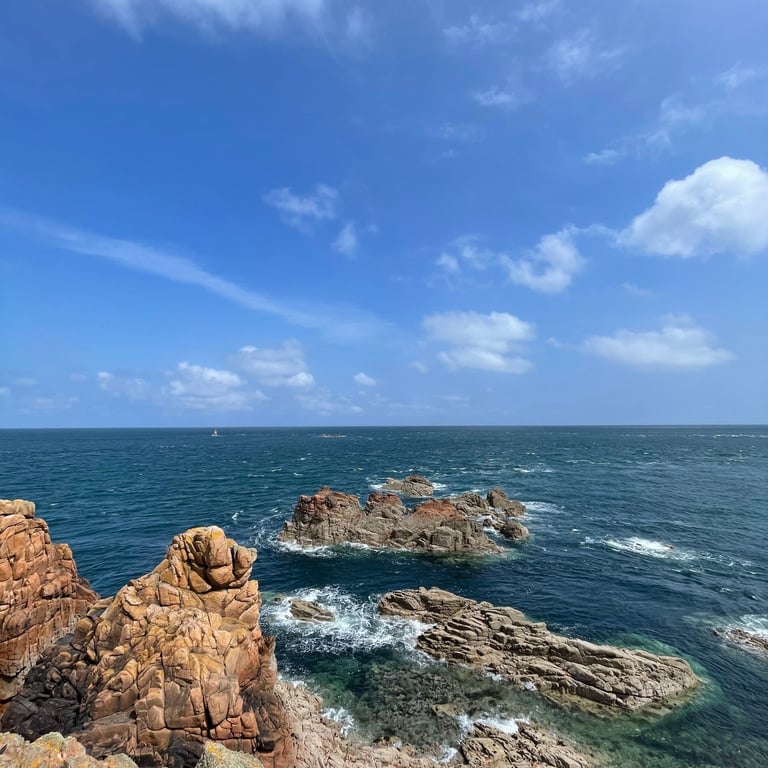

Stage 8: Hœdic
As expected: barely back, and already gone again. This time, heading to Hœdic a simple stretch of sand laid on the ocean, rimmed with turquoise beaches.
This island is probably my favorite of the entire journey. Wild, almost deserted, as if forgotten by the world. Each morning, a boat drops off a handful of passengers. By evening, it leaves. No hotels, barely a harbor to stay the night. Which means only a lucky few those who accept the in-and-out day trip get to experience the island’s magical solitude.
And so I found myself there, with a small group, nearly alone in the world. Facing Hœdic. Just the island and us. For the span of a day.
Its landscapes seem from another time. Preserved. Silent. The few houses, nestled at the heart of the village, are unmistakably Breton they seem to watch over the island as much as the island watches over them.
The loop around is short in fact, this is the shortest stage of my entire adventure. A sandy path circles the island. Each step feels a bit heavy, but each turn reveals a new cove, a new hidden gem.
Hœdic also marks a turning point: the beginning of my exploration around the Bay of Quiberon. From now on, two silhouettes will keep me company, always visible from the dunes the majestic Belle-Île, and its quieter twin: Houat.
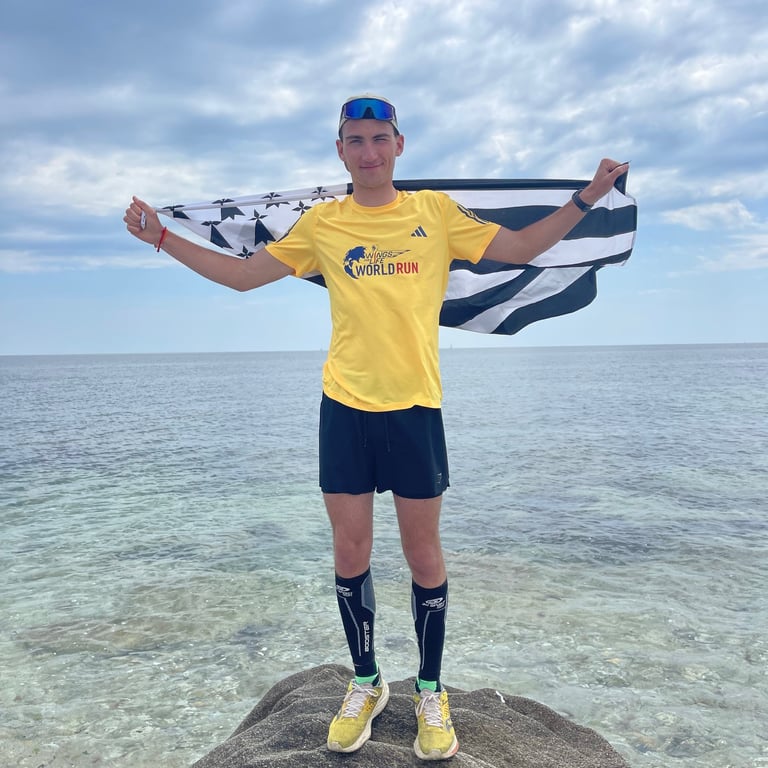
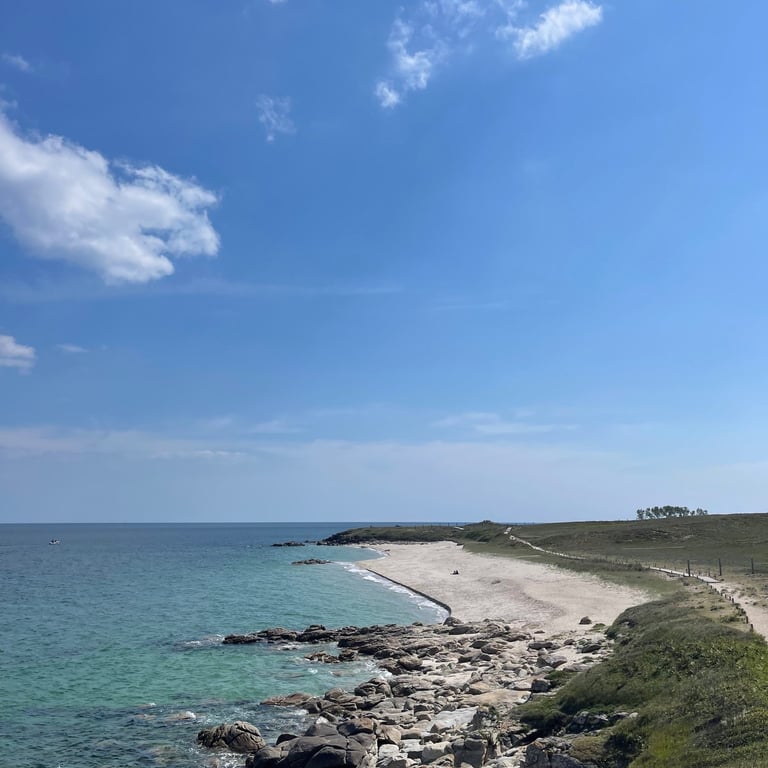
Stage 9: Belle-Île
It lives up to its name. Breathtaking landscapes, hidden coves, a sea that dances against the rocks and a GR trail that is… well, relentless.
For the first time since the beginning of this journey, I set out for several days, determined to take on the 77 km of the GR340 in just 48 hours.
And for the first time, it felt like a true trail run: bounding between rocks along cliff edges, losing my footing in ferns so tall I couldn’t see my feet, swallowed up by the endless green. I crossed paths with a wild goat startled by the closeness, just as I was. The wildlife here doesn’t hide: it watches you pass. And then came the 2,500 meters of elevation gain. Let’s just say my quads were on fire.
This was by far the toughest stage. Nothing like the other islands.
Sun-scorched trails, wind whistling against the cliffs, rocks soaking up the heat and radiating it back like a silent flame.
Pretty early into the loop, a foot injury slowed me down. But I kept going. I learned to accept it, to listen to it without stopping.
Above all, this island reminded me of something essential: don’t fight nature. Move with it.77 kilometers of pain. But also 77 kilometers of unforgettable landscapes.
77 kilometers to remember what it feels like to be alive.Next stop: Houat. I can already see it thin and white on the water as I write these words from the deck of the boat.
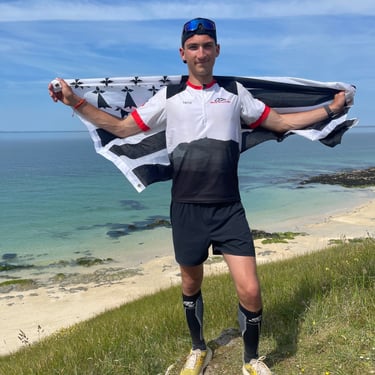
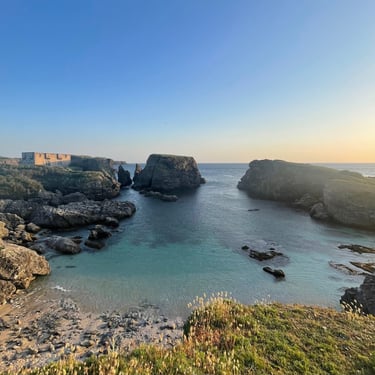
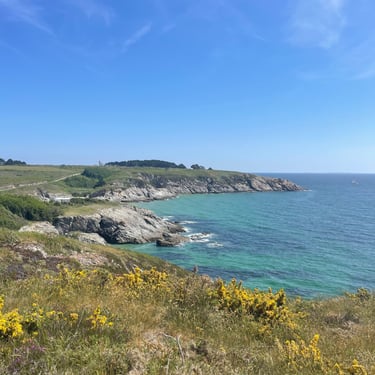
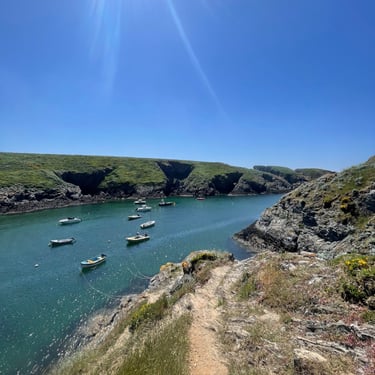
Stage 10: Houat
Final Breton stop. Though it resembles its sister Hœdic, Houat reveals a wilder, more vegetal side sandy and lush.
As soon as I stepped ashore, I felt a slight pang of nostalgia. I knew this would be my last island in this beautiful region.
What I discovered was a magnificent landscape woven from contrasts: dense vegetation, hidden coves, and wide beaches where turquoise waves gently meet pale sand.
The coastal path, not particularly difficult, offered a kind of summary of all the islands I’ve crossed so far. The first section was green and untamed, every step sinking into thick ferns and spiky gorse, slowing the pace and forcing me to pay close attention.
Then came a rockier stretch, steep in places, where nature reclaims its space gulls reign here, loud and proud, guardians of a land that sleeps at night and comes alive by day.
And finally, a stretch of deep sand, each step a slow, steady effort, leading to a tiny Breton village, almost unreal, as if time itself had forgotten it. Like Hœdic, it’s nearly impossible to stay here more than a day. And maybe that’s part of the magic the island quickly returns to silence, almost empty. Almost yours alone.
This was the tenth, and last, Breton island of the journey.
Now it’s time to leave Brittany behind and head south toward its neighboring region, for the final stage the crossing that will link the two coasts and bring this journey to an end: the island of Yeu.
Time, now, for one last moment with island nature one final dance…
